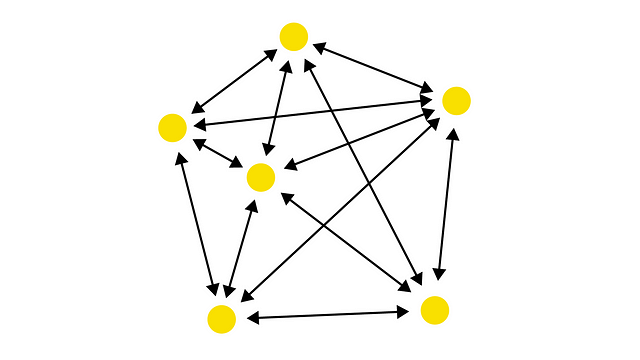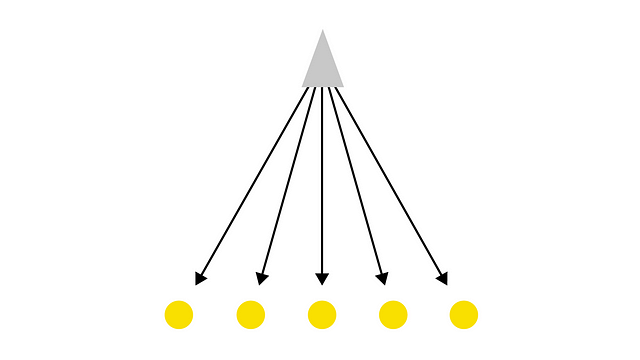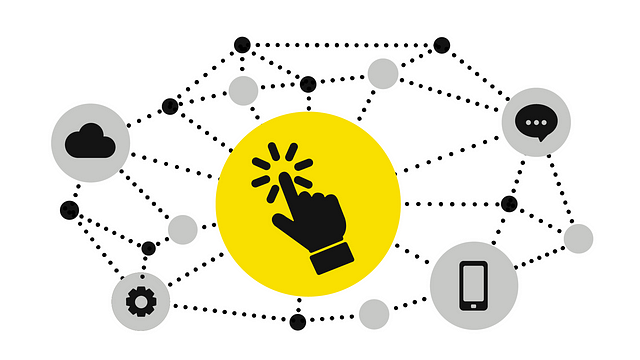Decentralization is not a new concept, dating back to ancient human societies living in small, Neolithic decentralized communities of less than 100 people, where mutual accountability was common.
Smaller populations made management easier and fostered trust and close relationships, making it difficult for selfish behavior to go unnoticed.

(Image courtesy of Johann Gevers)
This decentralized society was characterized by interactions between individuals living in small communities with limited hierarchical structures, where rulers were unnecessary due to everyone’s self-reliance.
However, the focus on agriculture led to the growth of communities, transitioning from small groups to larger societies, necessitating centralized forms of governance.
Neolithic Age: the birth of the Agrarian Revolution
The exact cause of the agrarian revolution is unclear, but it marked the transition from small nomadic groups to larger settlements focusing on early agricultural civilizations.
The fertile crescent of the Middle East served as the birthplace of the agrarian revolution, with humans developing farming tools and practices around 10,000 BC, leading to the growth of organized communities and the transition to agriculture.
Even in the early stages of the revolution, communities relied on stone tools and practiced hunting and gathering alongside agriculture.
The agrarian change marked the separation of Neolithic people from their Paleolithic ancestors, triggering a shift from old social norms to new ones, similar to what new technologies like the internet do today.
The growth of towns and cities was fueled by the increasing human population and the benefits of dense settlements, as well as the development of agriculture, creating a need for centralized social structures.
Formation of cities and towns.

The need for a central authority arose as communities expanded and became impractical to govern without centralized oversight.
It was after the Neolithic period that cities began to form, with theories suggesting that growing populations and dense settlements led to the development of early towns and cities.
The end of the Ice age around 14,000 years ago possibly triggered climate change that fueled the transition to agriculture, leading to a network of interactions among humans and necessitating centralized social structures.
The increase in food production due to farming immigrants replacing foragers led to higher population density and the subsequent development of towns and cities, as argued in Paul Bairoch’s book titled “Cities and Economic Development.”
Dense populations in towns and cities offered advantages such as reduced transportation costs, interaction and exchange, and access to amenities, leading to centralized social structures.
How did empires emerge?
As agriculture advanced, communities learned to improve labor intensity, leading to increased production of various products and a significant rise in population.
The complexity of disputes grew alongside larger communities, demanding more efficient organizational structures, which were met by chiefs and village elders taking on the responsibility of facilitating trust and accountability.
Trade and the accumulation of wealth further shaped the social structure, ultimately leading to the emergence of wealthy and powerful individuals and the notion of money as a means of exchange.
The evolution of a monetary system.
The invention of money was a significant milestone, initially relying on barter trade and later transitioning to commodity and metallic money. Ultimately, kingdoms legitimized paper money, forming the basis of centralized financial systems.
The need for better management of irrigation projects and protection against neighboring groups likely paved the way for the emergence of monarchs and centralized forms of government.
The rise of government.
Armed protection and governmental legitimacy became crucial with the evolving need for centralized governance, leading to the institutionalization of political and religious groups.
Dunbar’s Number

Dunbar’s theory suggests that trust and security were achievable within small communities, but beyond a certain limit, communities required a centralized authority for supervision and accountability.
Centralized forms of governance and social structures were essential in establishing security, trust, and stability as communities grew larger and more complex.
Back to governance.
As societies evolved, they increasingly relied on centralized systems for protection and trust in trade and social interactions, culminating in the institutionalization of political and religious groups.
The concept of land ownership shaped the rise of the governing class and the masses, leading to rigid social stratification and centralized systems of governance.
The pros and cons of centralization.
Centralization brought about order, reliability, and trust, leading to better levels of consistency and efficiency in society.
With a centralized authority, reduced production costs, uniformity in action, improved quality of work, and better coordination were achieved, contributing to stability and predictability in society.
While centralization offered benefits such as efficiency and stability, it also brought about drawbacks such as the abuse of power, reduced efficiency, and censorship.
Abuse of power
Centralized systems of authority often led to autocratic leadership, potentially resulting in abuses of power and corruption.
Throughout history, centralized forms of governance have been associated with autocracy and power abuse, leading to issues such as genocide and the concentration of power in the ruling elite.
Slow down inefficiency
As centralized systems became more complex, efficiency decreased due to the disconnect between decision-makers and subordinates, resulting in a decline in the quality and speed of decision-making.
Censorship
Centralized forms of government led to high levels of censorship, exemplified in regions like China, which maintains centralized control over the flow of information and ideas.
Education and information are also subject to centralized control, limiting the exchange of ideas and knowledge.
Centralized forms of governance concentrate power in the hands of a select few, leading to potential abuses and a lack of checks and balances, ultimately resulting in censorship and control.
Why decentralization is important.
Decentralization is necessary to counter the problems associated with centralized systems, distributing decision-making and planning to avoid unbalanced exertion of control by a select few elites.
Western civilization has witnessed attempts to dismantle centralized systems, including the birth of democracy in Athens and the invention of the printing press, which decentralized the flow of information.
The internet and distributed ledger technologies have furthered decentralization, providing transparency and accountability in various sectors, such as finance and digital identity, with the potential to support global sustainability and economic development.
Printing press.

Early Press, etching from Early Typography by William Skeen
The printing press revolutionized the accessibility of information, decentralizing the control of knowledge and information previously held by religious and government authorities.
Libraries furthered the dissemination of knowledge, contributing to the decentralization of power and information.
Internet.

The internet further decentralized information and knowledge, allowing everyone to act as their own publisher, leading to reduced censorship and the democratization of ideas.
Distributed ledger technologies such as blockchain have also contributed to decentralization, impacting industries like finance and providing a trustless system for various applications.
Final thoughts: the future is decentralized.
Decentralization, facilitated by technologies like blockchain, can bring about transparency and accountability, supporting goals such as sustainable development and equitable economic development.
The potential of decentralized technologies, such as blockchain, to address issues of governance, sustainability, and economic development is evident, with global organizations like the United Nations exploring alternative financial mechanisms to support entrepreneurship and sustainable development goals.
The future is decentralized, offering transparency, collaboration, and exchange on a global scale.
Programs by global organizations such as the SDGs can set the pace for broader levels of transparency, collaboration, and exchange across the globe (demyan, author, personal business).
